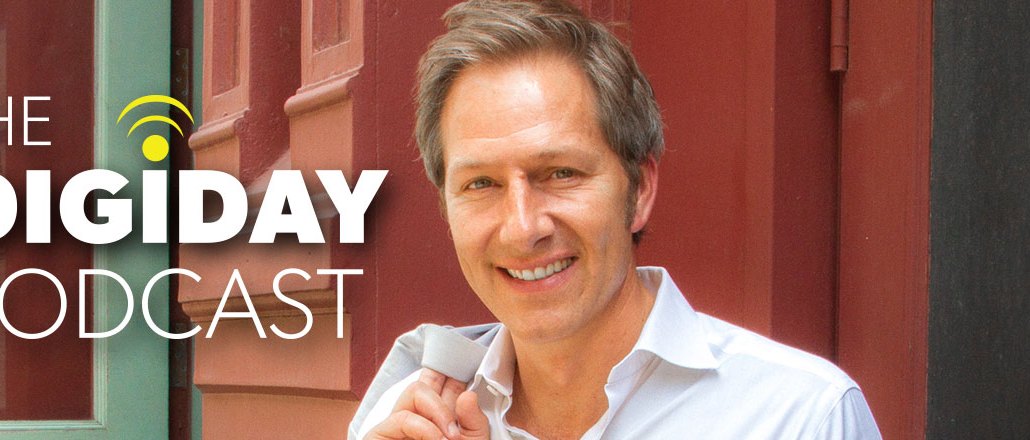Save 50% on a 3-month Digiday+ membership. Ends Dec 5.

Subscribe: iTunes | Stitcher | RSS
As part of a family-owned media company in Atlantic Media, business news brand Quartz doesn’t have tens of millions in venture backing to fall back on. That’s both a blessing and a curse, Quartz publisher and co-president Jay Lauf said on this week’s Digiday Podcast.
“Some resource constraint is a really good thing,” Lauf said. “It makes you focus on what do you want to be, what are your priorities and how to execute against those priorities. As a three-and-a-half-year-old brand, I give us high marks for what not to do. When you’re a brand that burst on the scene like Quartz, you have a lot of in-bound ideas, in-bound interest, a lot of things you could go do. We’ve remained focused on things we think are essential to growing the brand.”
Below are some highlights from the half-hour discussion.
Quartz’s ‘wedge of daylight’
All new media properties face the question of why they’re needed. There isn’t a shortage of news brands out there. Quartz faced the same challenge, entering the market for business news in a vertical that includes The Economist, The Financial Times, The Wall Street Journal, Bloomberg BusinessWeek and many others. Lauf said the opportunity seen by The Atlantic was around new forms of distribution and going away from a subscription model.
“The thinking was the media habits of our target, global business professionals, had been changing drastically in an age where mobile was becoming the ubiquitous device and social the ubiquitous vehicle for discovering and sharing content,” said Lauf. “The competitors in our space were not shifting quickly enough to those habits. They had different business models, different approaches to serving that audience. It left a wedge of daylight.”
Ad position: web_incontent_pos1
Quartz has opted out of ‘commoditized’ advertising
As an ad-dependent publication, Quartz faces the same tough market as other publishers. Lauf said the Quartz founding team, which included now Bloomberg Media CEO Justin Smith and Lauf’s co-president and editor-in-chief Kevin Delaney, recognized this and crafted a premium ad business. It narrowed its launch partners to just four for the first year. It has never run standardized display, opting instead for full-screen custom units and content marketing. Quartz, which has 170 people and has been reported to have $30 million in annual revenue, boasts CPMs “10 times the industry average” at around $60 and boasts a 90 percent retention rate for the 180 advertisers it’s worked with.
“The thinking was, why are we going to replicate these banners and boxes that have very little value in the marketplace?” he said. “You know they have little value because people don’t pay attention to them and as a result advertisers are paying miniscule rates for those banners and boxes. The only way then to make money is to sell millions more of these commoditized units. The only way to do that is a race to the bottom.”
What scale means to Quartz
In digital media, Quartz is not large. Like many not in top rung of most-visited sites, Lauf dismisses “scale for scale’s sake.” Still, audience size matters even within a focused vertical like the global business elite. In May, Quartz reached 9.2 million visitors, according to comScore.
“Where we need to be as a healthy business is not far off from where we are,” Lauf said. “I do believe there’s a much larger target audience. You can see reaching between 40 and 80 million visitors. That feels like a quite healthy and robust size for that target audience. But we’re not talking about hundreds of millions readers. I don’t think that’s where Quartz needs to be.”
The Information and Stratechery deserve attention
For Quartz, subscriptions are not part of its plan in the near term. Instead, it has focused on building a large enough audience within global business news. But Lauf admires smaller publications like The Information and Stratechery, which have cast their lot with subscription models — and aim to prove that people are willing to pay real money for high-quality digital media.
Ad position: web_incontent_pos2
“I find The Information and Stratechery really interesting as brands that go really deep on their subject matter; it’s high quality, and I like the idea of them controlling how they want to scale those businesses,” he said. “I think they’re really interesting, and I think even larger publishers can learn a little of something from their approach.”
More in Media

What publishers are wishing for this holiday season: End AI scraping and determine AI-powered audience value
Publishers want a fair, structured, regulated AI environment and they also want to define what the next decade of audience metrics looks like.

Digiday+ Research Subscription Index 2025: Subscription strategies from Bloomberg, The New York Times, Vox and others
Digiday’s third annual Subscription Index examines and measures publishers’ subscription strategies to identify common approaches and key tactics among Bloomberg, The New York Times, Vox and others.

From lawsuits to lobbying: How publishers are fighting AI
We may be closing out 2025, but publishers aren’t retreating from the battle of AI search — some are escalating it, and they expect the fight to stretch deep into 2026.
Ad position: web_bfu
